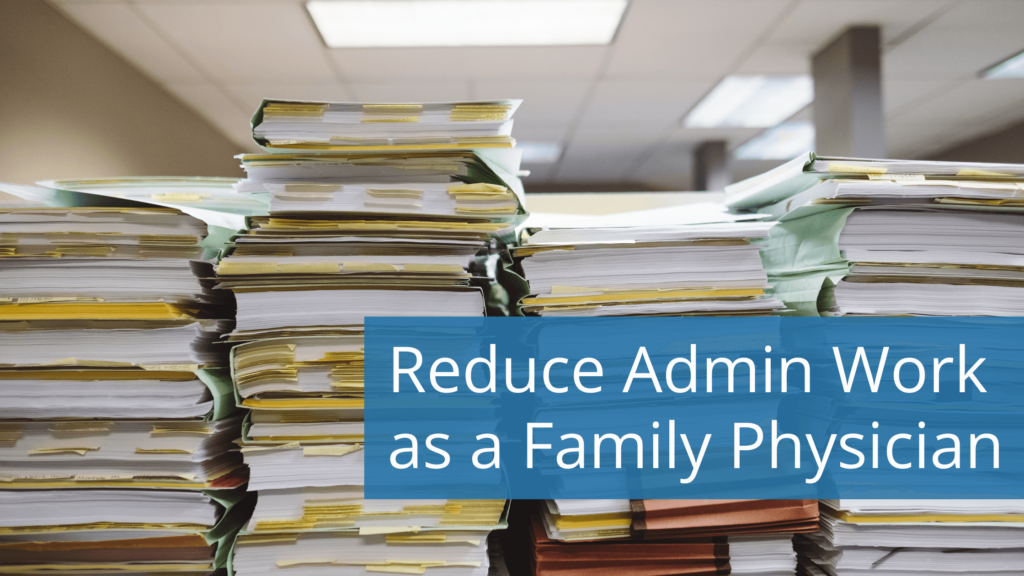Being a family doctor is indeed a challenging yet rewarding profession. While it’s fulfilling to help patients, there’s also a significant amount of paperwork and admin work that comes with it.
Balancing both can be overwhelming and lead to burnout.
That’s why it’s important to take the right steps to reduce the workload on your end.
In this article, I’ll share nine practical ways to ease your administrative burden. These tips will help you work smarter, reduce paperwork, and have more time for patient care.
Let’s delve into the details.
1. Manage Prior Authorizations & Embrace Team Documentation
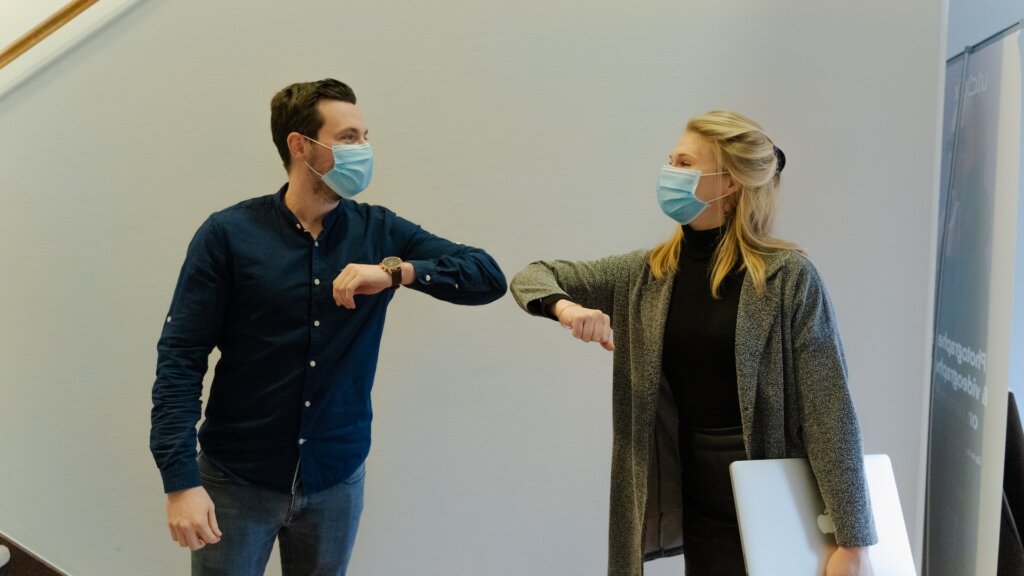
Begin by selecting dedicated staff members to handle prior authorizations.
They will play a crucial role when a patient needs approval for a specific medication or procedure.
Your staff members can compile all the necessary information and submit the request electronically.
Using teamwork for patient documentation can also help reduce paperwork and improve patient care.
Here are the main benefits of harnessing strengths together:
- A trained medical assistant can update the patient’s history and check medications at the start of the visit.
- You can concentrate solely on addressing the patient’s medical concerns during the visit without distractions.
- Task specialization leads to quicker and more accurate handling of responsibilities.
- Splitting responsibilities ensures thorough patient care without overlooking important details.
2. Optimize Inbox Management

Effective inbox management is a game-changer for family physicians.
It keeps them organized and enables quick responses to patient inquiries. Also, it ensures that important medical information is never overlooked, which, in turn, leads to improved patient care and greater practice efficiency.
Assign your capable medical assistant to handle routine medication refill requests. This will keep your inbox free from such tasks.
Also, empower your staff to schedule telehealth appointments for non-urgent issues.
A 2022 study involving 151 physicians from Cluster 1 hospitals in Saudi Arabia showed quite positive results.
Over half (59.6%) of the physicians reported better job performance, with 58.9% stating they could handle tasks more efficiently when using telehealth services.
3. Streamline Documentation
Family doctors should carefully maintain records of patient information and medical data.
To make the whole process easier, they should integrate time-saving practices and tools into their daily routines.
For instance, instead of lengthy narratives for each patient, they can use pre-made templates with common patient history details.
In this way, they’ll eliminate the need to document the same information repeatedly.
4. Improve Your E/M Coding Knowledge
In 2019, the Centers for Medicare & Medicaid Services planned to simplify E/M coding by blending visit levels 2–4 into a single rate by 2021.
History, physical exams, and bullet counting were no longer needed for code selection.
So, now in outpatient E/M coding, medical decision-making has three main parts:
- Number and complexity of problems.
- Amount/complexity of data reviewed.
- Risk of complications/morbidity/mortality.
Each has four levels: straightforward, low, moderate, and high. To code a visit, two of three components must meet or exceed that level. This simplification significantly eases the coding process.
Understanding E/M coding is essential because it determines how much you get paid for patient visits. The quicker you grasp how it works, the more smoothly everything else will go.
5. Alternatively, Outsource Billing and Coding
If E/M coding feels overwhelming for you, consider outsourcing your medical billing and coding tasks to a professional billing service.
You can rely on these experts for accuracy and compliance with insurance regulations. Also, you’ll free up your time and won’t have to deal with billing-related work.
According to Sermo, a social network platform for physicians, the biggest pros of outsourcing medical billing are cost savings, more time for patient care, reduced errors, increased staffing consistency, secured patient data, and a potential boost in practice revenue.
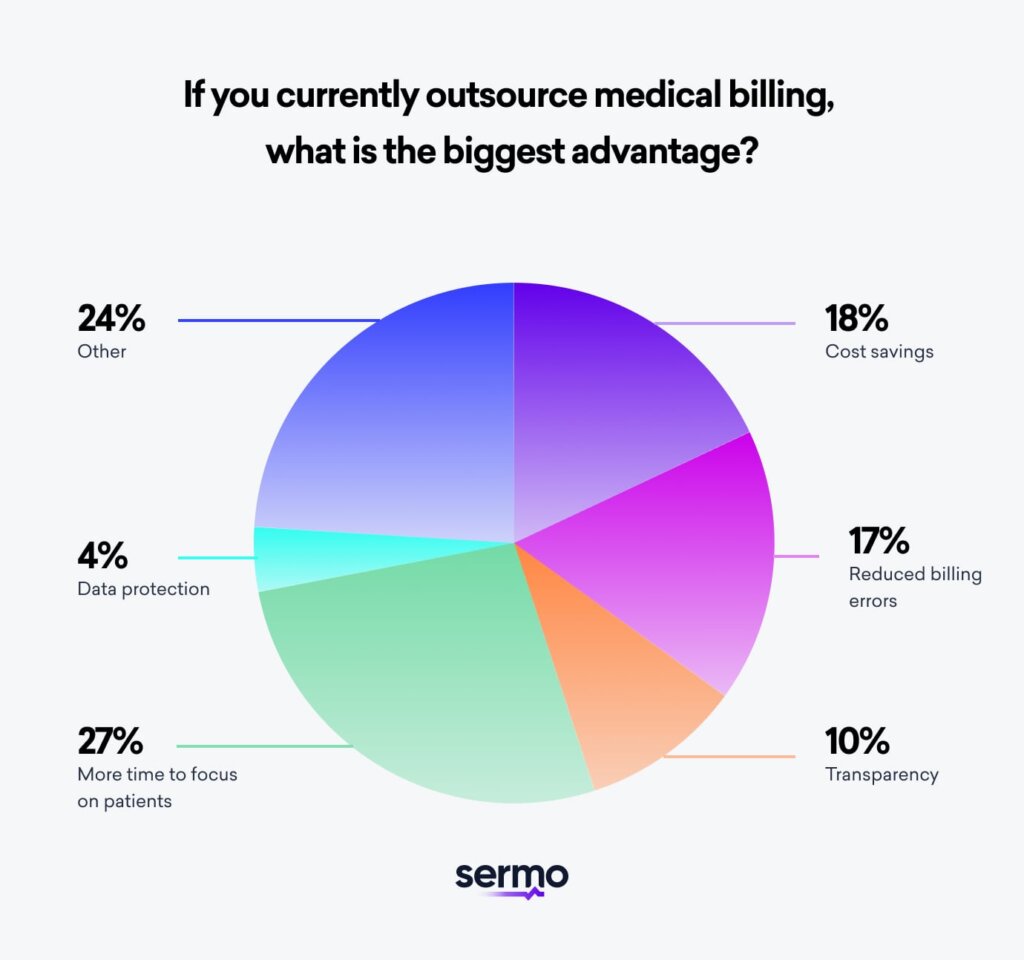
However, there are drawbacks to consider, too.
According to Sermo’s research again, the main cons of outsourcing medical billing involve relinquishing control, variable and potentially hidden costs, compliance risks, patient inconveniences, and a lack of flexibility compared to in-house billing.
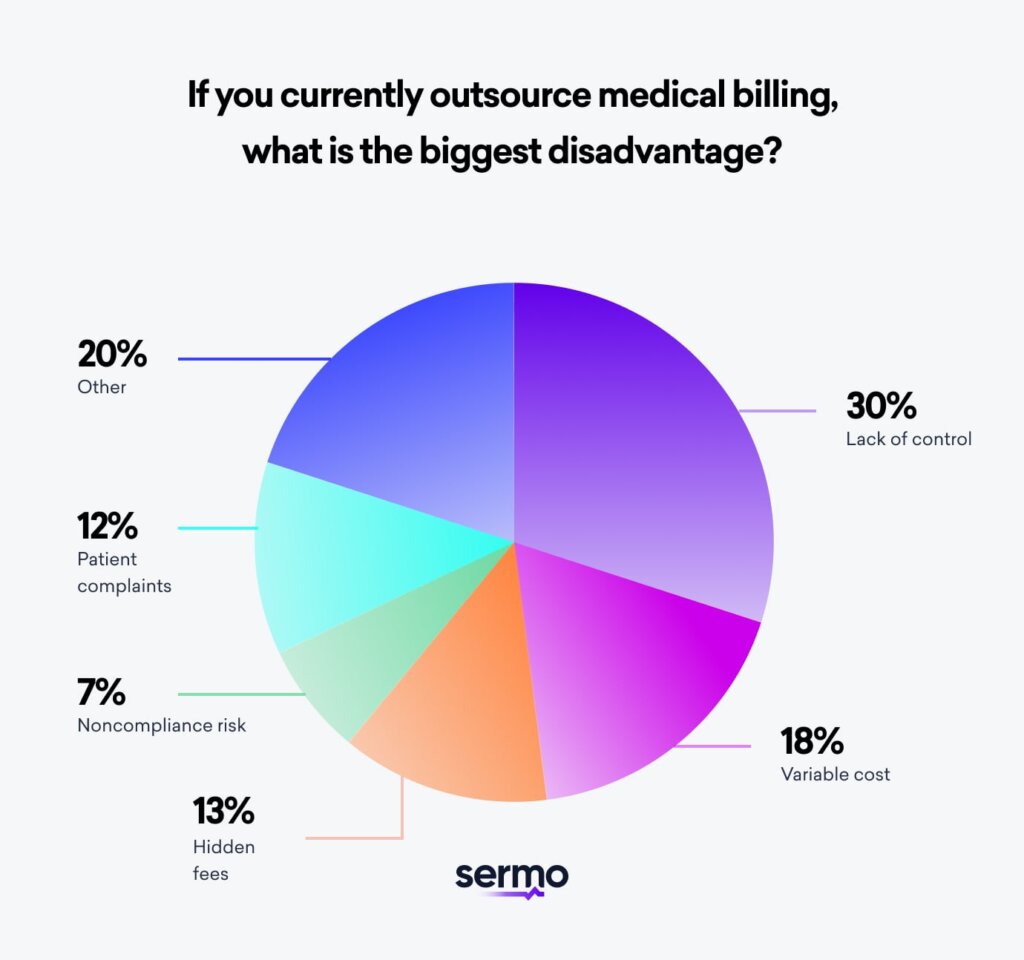
This alternative to E/M coding obviously results in extra costs. On the other hand, while outsourcing may lower your profits, you’ll get more valuable time and more accuracy.
In 2019, the American Hospitals Association reported that uncompensated hospital care costs exceeded a whopping $620 billion.
These billing inefficiencies are causing healthcare providers to lose a staggering $300 billion each year. It’s important to note that a staggering 99% of medical bills over $3,000 remained unpaid.
That’s why outsourcing these tasks to experienced professionals can be a wise decision to prevent losing money.
6. Extend Medication Prescriptions

Over 84% of visits to primary care physicians involve medication-related tasks. Extending prescription durations for medications is another great idea of how to reduce admin work.
For example, you can authorize prescriptions for chronic medications for a longer period, like one year.
This reduces the frequency of refill-related calls and messages.
Also, it helps patients get their needed medications on time and improves adherence.
7. Use Automated Appointment Reminders

Use automated appointment reminders to make your practice run smoother and keep patients engaged.
Reminders can cut down on missed appointments, keeping your schedule on track. With fewer cancellations and no-shows, your staff can spend less time rescheduling and more time on important tasks.
Ultimately, a few missed appointments mean better practice revenue, preventing financial losses.
For instance, you can try the NexHealth appointment reminder application to reduce no-shows, automate reminders, and streamline your patients’ journey.
Thanks to NexHealth, The Smilist (a dental provider) enjoys an 85% patient return rate using recall methods. Their daily tasks are made more efficient, saving over 2 hours with NexHealth Forms.
In the past 5 years, they’ve grown by 216%, and in 2022 alone, they’ve booked more than 6,700 new patients, demonstrating the platform’s positive impact.
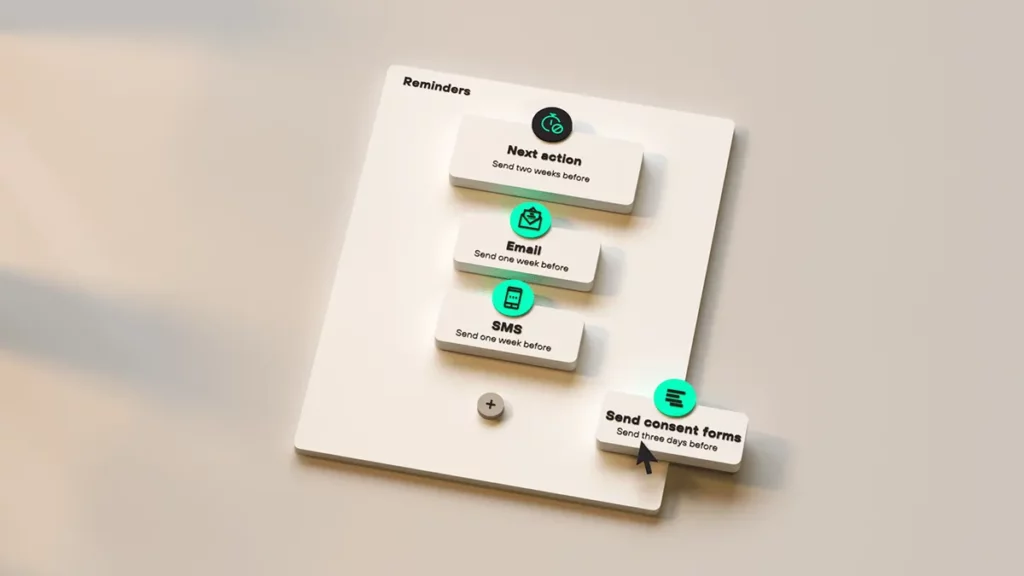
Here’s what Melanie Basile, Chief Growth Officer at The Smilist, shared about their experience with NexHealth:
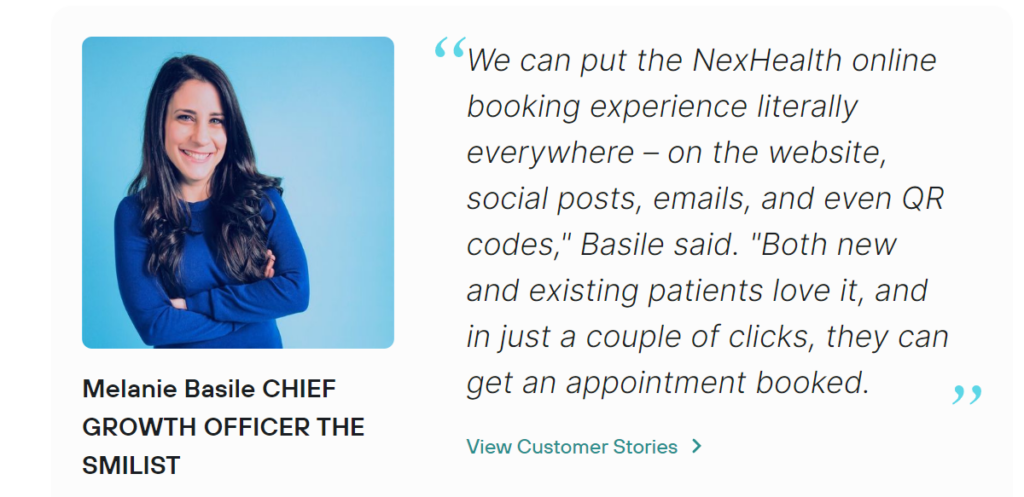
Alternatively, you can consider Doctor-Patient Appointment Reminders by Mend, which offers a multi-channel approach through reminder calls, smart texts, and emails.
Mend’s appointment reminder service uses text messages to quickly reach patients, achieving a 90% read rate within 3 minutes.
This approach, combined with email reminders and rescheduling options, can reduce no-show rates to 11-18%, with the possibility of further decreases of 2-8% through easy patient rescheduling.
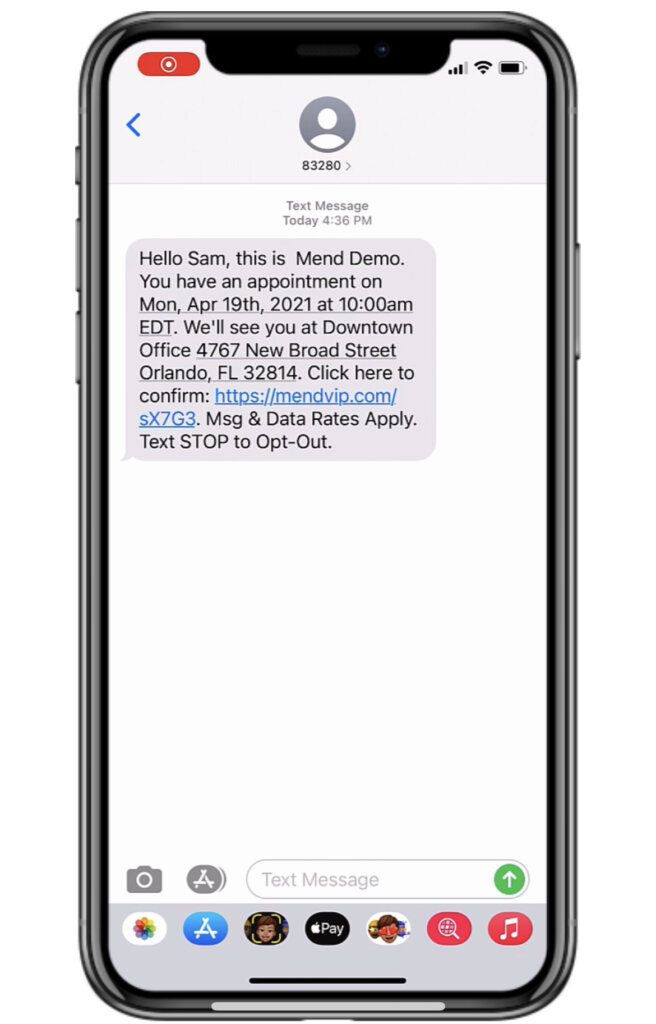
Using reminders has another advantage: People love receiving reminders, which ultimately leads to higher satisfaction. Timely reminders will help your patients stick to their treatment plans and, thus, improve their health.
8. Provide Patient Education Materials

Share educational materials with patients, including brochures, pamphlets, and online content.
Scientific Research Publishing survey found that patients really like educational materials.
86% of surveyed patients preferred reading educational materials like leaflets. On the other hand, 50% of the patients thought videos were a good way to learn while 31% were interested in learning from podcasts.
All kinds of educational materials lead to many advantages.
For instance, they provide patients with clear and comprehensive information about their health conditions or treatments.
Also, when patients have access to well-structured educational materials, it boosts their confidence in managing their health effectively. It motivates them and lets them take an active role in their health care.
Informative materials reduce the likelihood of confusion, too. This results in fewer questions from the patients’ side.
In essence, when patients have access to information, these are the outcomes:
- Improved patient understanding.
- Increased patient confidence in managing their health.
- Fewer patient inquiries and concerns.
- Reduced administrative workload for answering questions.
- Enhanced overall practice efficiency.
9. Leverage Technology to Streamline Family Medicine Documentation
In today’s tech landscape, family doctors need to embrace innovative solutions. One such solution is text expanders. They help doctors write terminology and phrases they regularly use in just a few clicks, reducing repetitive typing.
By automating documentation and note-taking, doctors can focus more on patients and less on admin work. Text expanders also reduce errors and enhance accuracy by minimizing typos.
They promote a smoother workflow through customizable templates for different medical scenarios.
One tool that encompasses all these benefits is PhraseExpander.
For instance, in September 2023, physicians saved 343,820 typos, 41,817 hours, and 304,016,642 keystrokes with PhraseExpander.
In the next sections, you’ll discover all the advantages of this software and why it’s cherished by doctors worldwide.
Streamlined Documentation And Time-Saving Efficiency
PhraseExpander enables the effortless creation of detailed patient notes, diagnoses, and medical records with minimal effort.
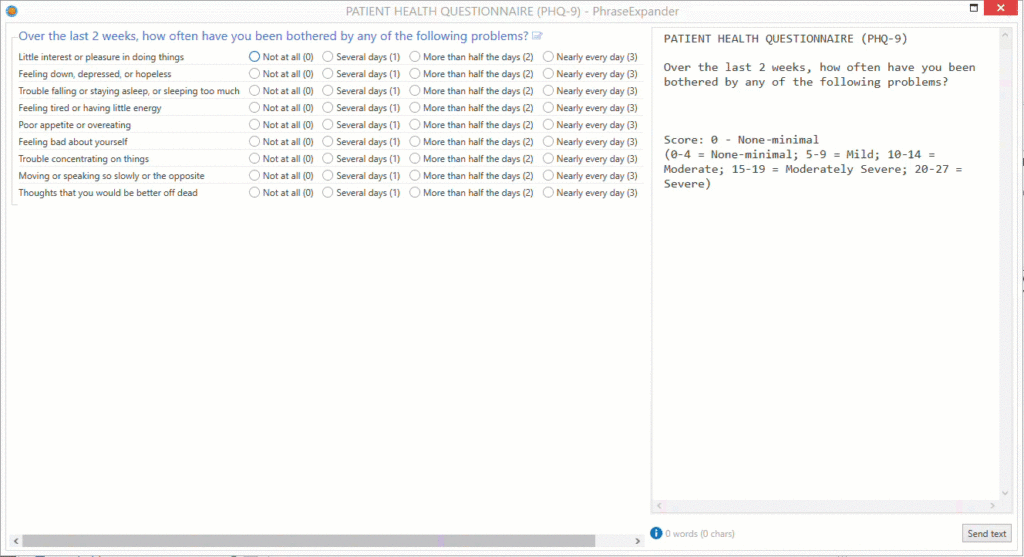
Thanks to the time-saving efficiency of PhraseExpander, family physicians can create intricate medical documents and notes in significantly less time.
Dr. Aaron, a US physician, praised PhraseExpander for its time-saving features, which help him access medical templates quickly in any EMR.
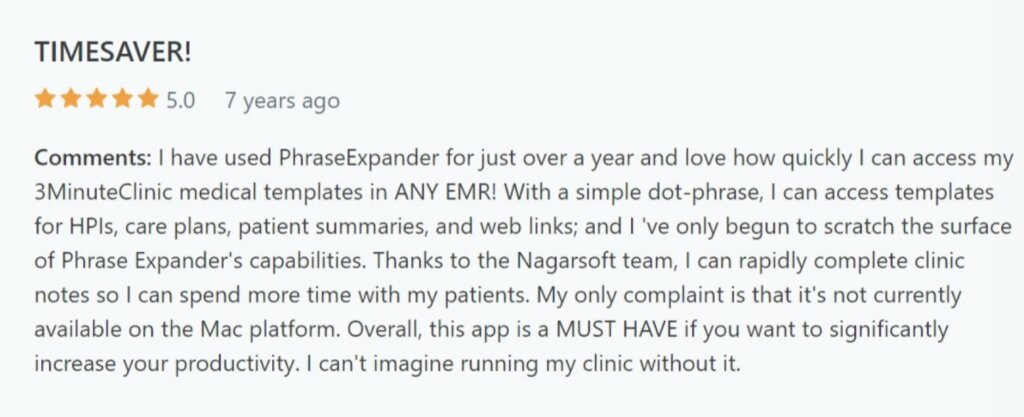
Adaptability to Medical Needs
PhraseExpander is intended to meet the medical field’s specific vocabulary and record-keeping requirements.
Family physicians can easily add and apply medical terminology and phrases without a lengthy process.
Also, PhraseExpander enables the quick personalization of each note for individual patients, saving valuable time while maintaining quality.
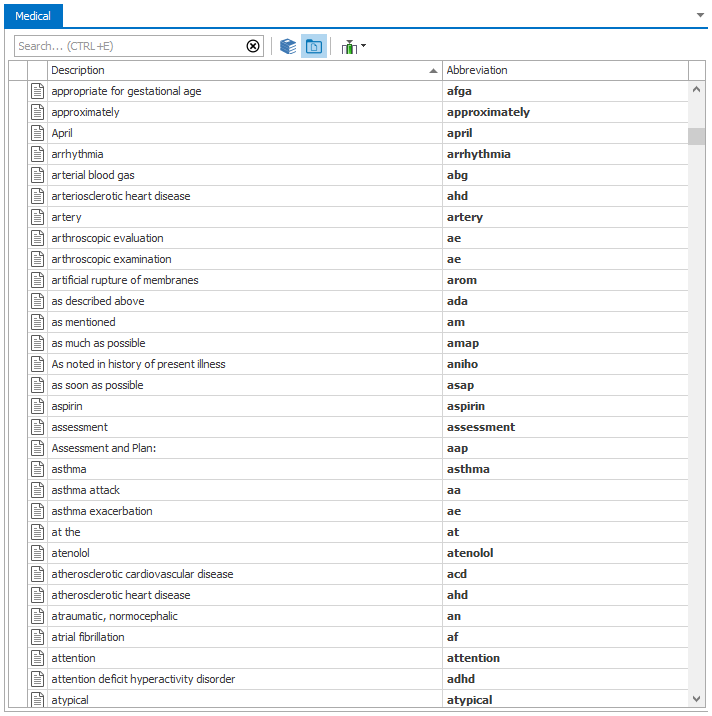
User-Friendly Interface
Unlike complicated software that requires substantial training, PhraseExpander provides a user-friendly experience.
Its intuitive interface ensures that family physicians can quickly learn and implement that knowledge, as mentioned by Alex, a managing director from UK:

Integration with Existing Data
The ability of PhraseExpander to import data from Word and Excel is another key advantage.
Family doctors can easily incorporate their existing docs and templates, eliminating the need for manual data entry.
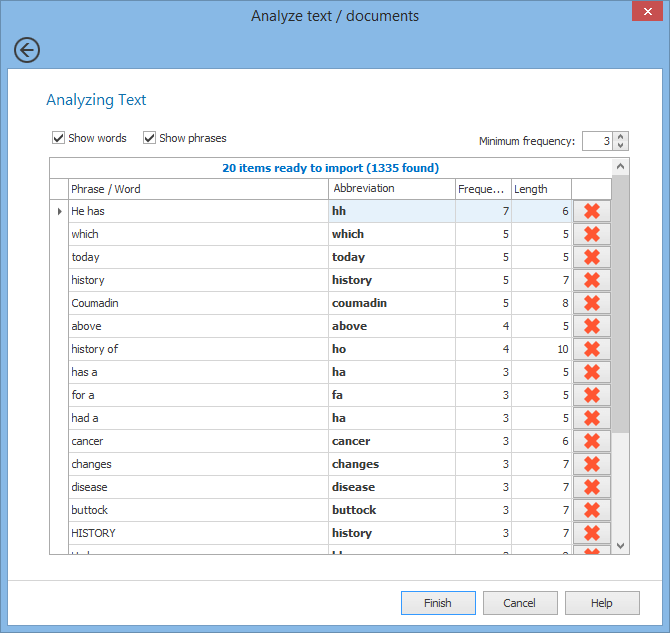
The fact that this feature is indeed one of the top benefits is evident in the following testimonial by David, a US attorney:

Spelling Accuracy and Autocorrection
Family physicians can trust PhraseExpander to maintain spelling accuracy, too.
As mentioned earlier, in September, doctors using PhraseExpander saved 343,973 typos. Over a whole year, that comes to more than 4 million errors saved.
The tool automatically corrects spelling errors and autocompletes challenging medical terms. It helps to reduce the risk of inaccuracies and the need for extensive proofreading.
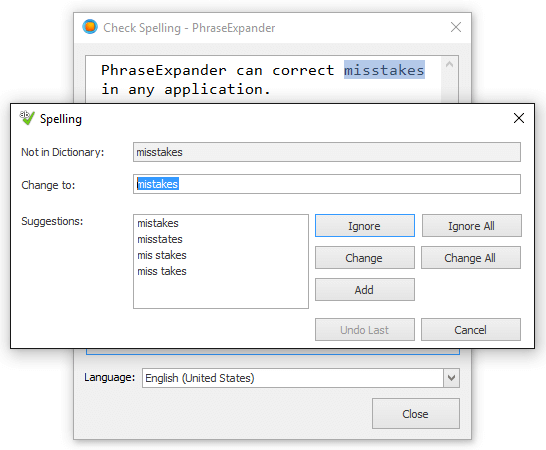
Many users have hailed this as one of its standout features.
Here’s Serge, a management consultant from Switzerland, praising the spell-checker feature of PhraseExpander:

Effortless Collaboration
Even collaboration becomes easier with the help of PhraseExpander.
Family physicians can effortlessly share templates with colleagues or support staff. This is how they can keep consistency in documentation and efficient teamwork.
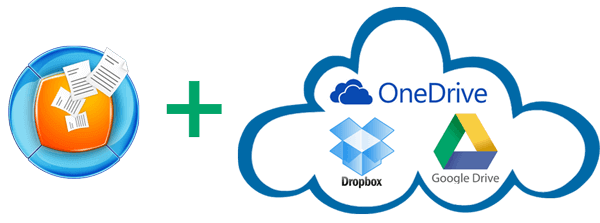
Rich Library of Pre-Made Templates
PhraseExpander offers a library of pre-made medical templates that aid in:
- Simplifying BMI calculation
- Conducting mental health assessments
- Autocompleting drug names
- Streamlining various medical tasks
- Enhancing efficiency
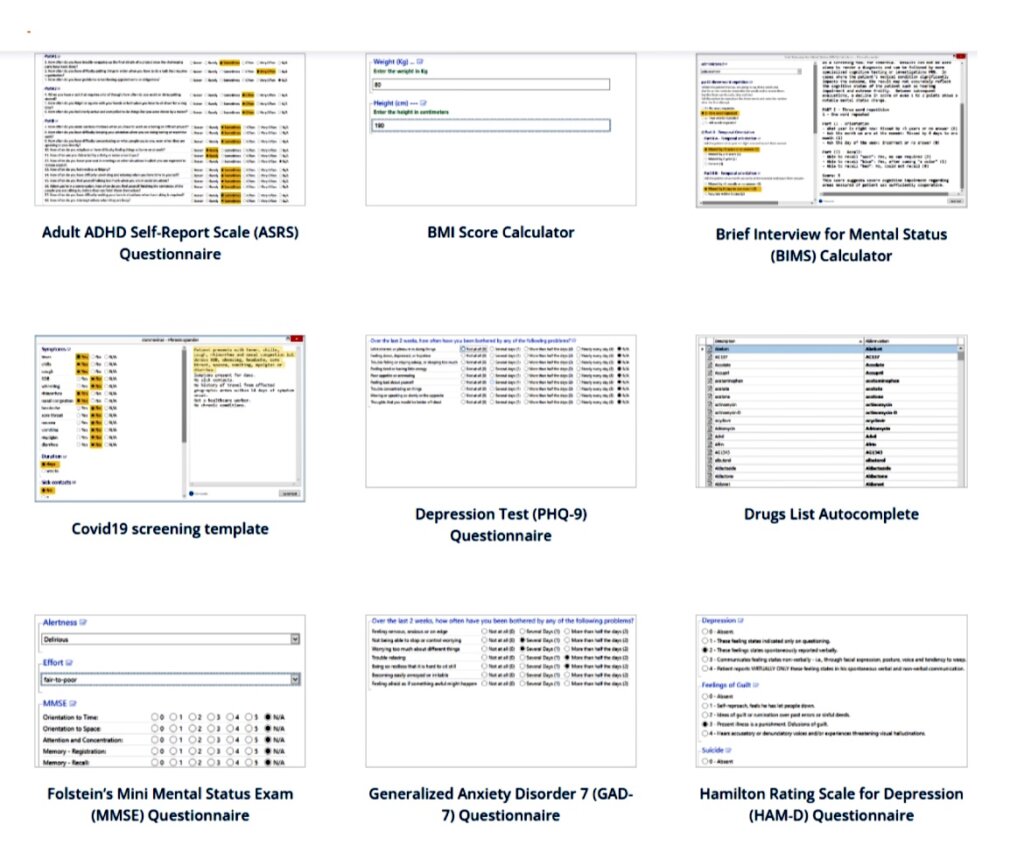
Furthermore, PhraseExpander provides extensive help and training tutorials, so don’t worry if you don’t know how to use it.
You’ll be able to become a professional user in no time and receive prompt assistance whenever you need it.
Get Started with PhraseExpander
Want to learn what PhraseExpander can do for you? Start your free trial
Conclusion
Finally, one thing is for sure – it’s difficult to balance paperwork with patient care.
However, with the appropriate strategies, you can streamline your work and improve the quality of care you provide.
The first (and most important) strategy – stay organized.
Secondly, use helpful tools like PhraseExpander to reduce admin work and prevent burnout.
Cut the paperwork and keep brightening your patients’ days instead!
